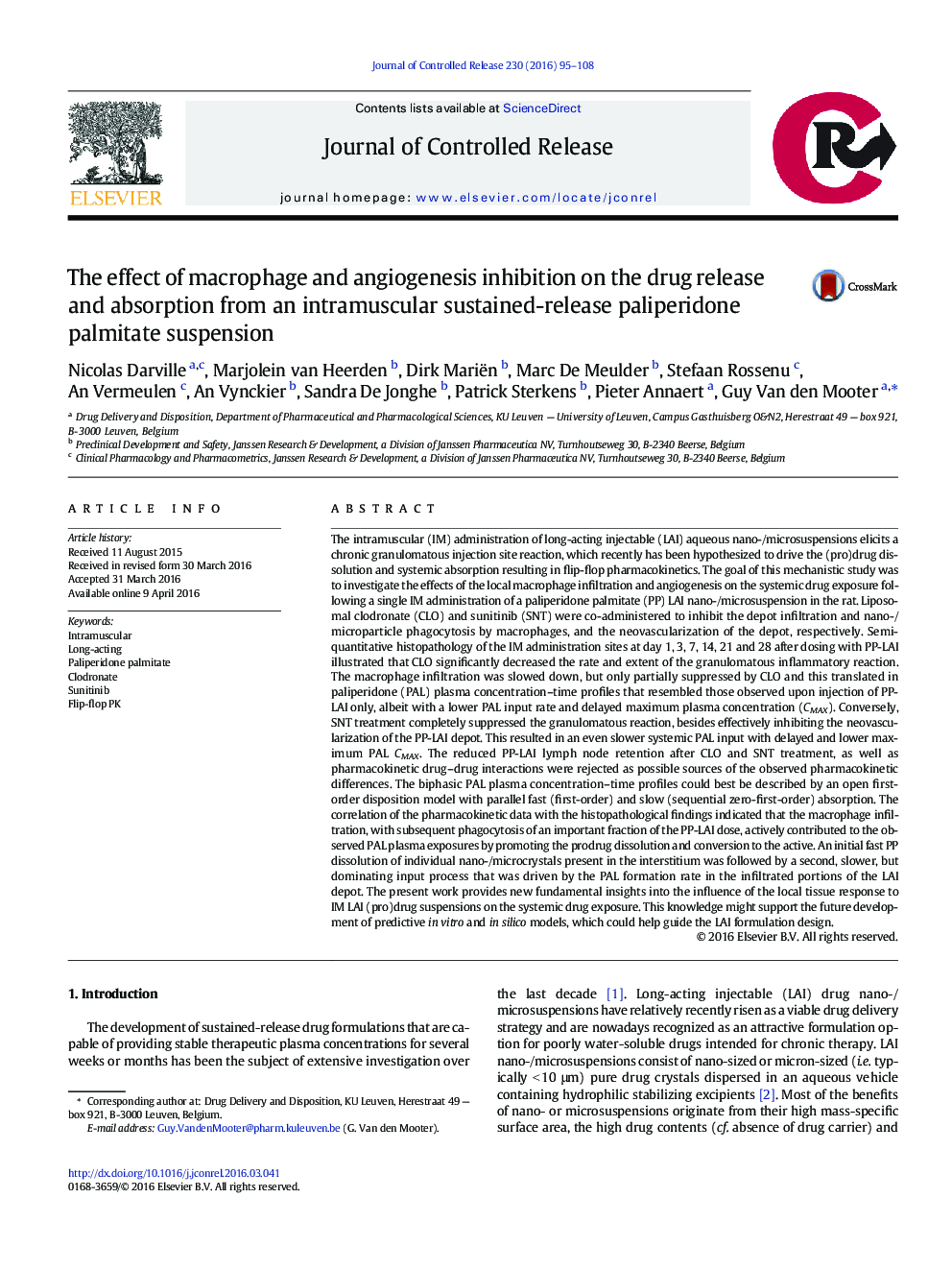| کد مقاله | کد نشریه | سال انتشار | مقاله انگلیسی | نسخه تمام متن |
|---|---|---|---|---|
| 1423587 | 1509019 | 2016 | 14 صفحه PDF | دانلود رایگان |
The intramuscular (IM) administration of long-acting injectable (LAI) aqueous nano-/microsuspensions elicits a chronic granulomatous injection site reaction, which recently has been hypothesized to drive the (pro)drug dissolution and systemic absorption resulting in flip-flop pharmacokinetics. The goal of this mechanistic study was to investigate the effects of the local macrophage infiltration and angiogenesis on the systemic drug exposure following a single IM administration of a paliperidone palmitate (PP) LAI nano-/microsuspension in the rat. Liposomal clodronate (CLO) and sunitinib (SNT) were co-administered to inhibit the depot infiltration and nano-/microparticle phagocytosis by macrophages, and the neovascularization of the depot, respectively. Semi-quantitative histopathology of the IM administration sites at day 1, 3, 7, 14, 21 and 28 after dosing with PP-LAI illustrated that CLO significantly decreased the rate and extent of the granulomatous inflammatory reaction. The macrophage infiltration was slowed down, but only partially suppressed by CLO and this translated in paliperidone (PAL) plasma concentration–time profiles that resembled those observed upon injection of PP-LAI only, albeit with a lower PAL input rate and delayed maximum plasma concentration (CMAX). Conversely, SNT treatment completely suppressed the granulomatous reaction, besides effectively inhibiting the neovascularization of the PP-LAI depot. This resulted in an even slower systemic PAL input with delayed and lower maximum PAL CMAX. The reduced PP-LAI lymph node retention after CLO and SNT treatment, as well as pharmacokinetic drug–drug interactions were rejected as possible sources of the observed pharmacokinetic differences. The biphasic PAL plasma concentration–time profiles could best be described by an open first-order disposition model with parallel fast (first-order) and slow (sequential zero-first-order) absorption. The correlation of the pharmacokinetic data with the histopathological findings indicated that the macrophage infiltration, with subsequent phagocytosis of an important fraction of the PP-LAI dose, actively contributed to the observed PAL plasma exposures by promoting the prodrug dissolution and conversion to the active. An initial fast PP dissolution of individual nano-/microcrystals present in the interstitium was followed by a second, slower, but dominating input process that was driven by the PAL formation rate in the infiltrated portions of the LAI depot. The present work provides new fundamental insights into the influence of the local tissue response to IM LAI (pro)drug suspensions on the systemic drug exposure. This knowledge might support the future development of predictive in vitro and in silico models, which could help guide the LAI formulation design.
Figure optionsDownload high-quality image (296 K)Download as PowerPoint slide
Journal: Journal of Controlled Release - Volume 230, 28 May 2016, Pages 95–108
